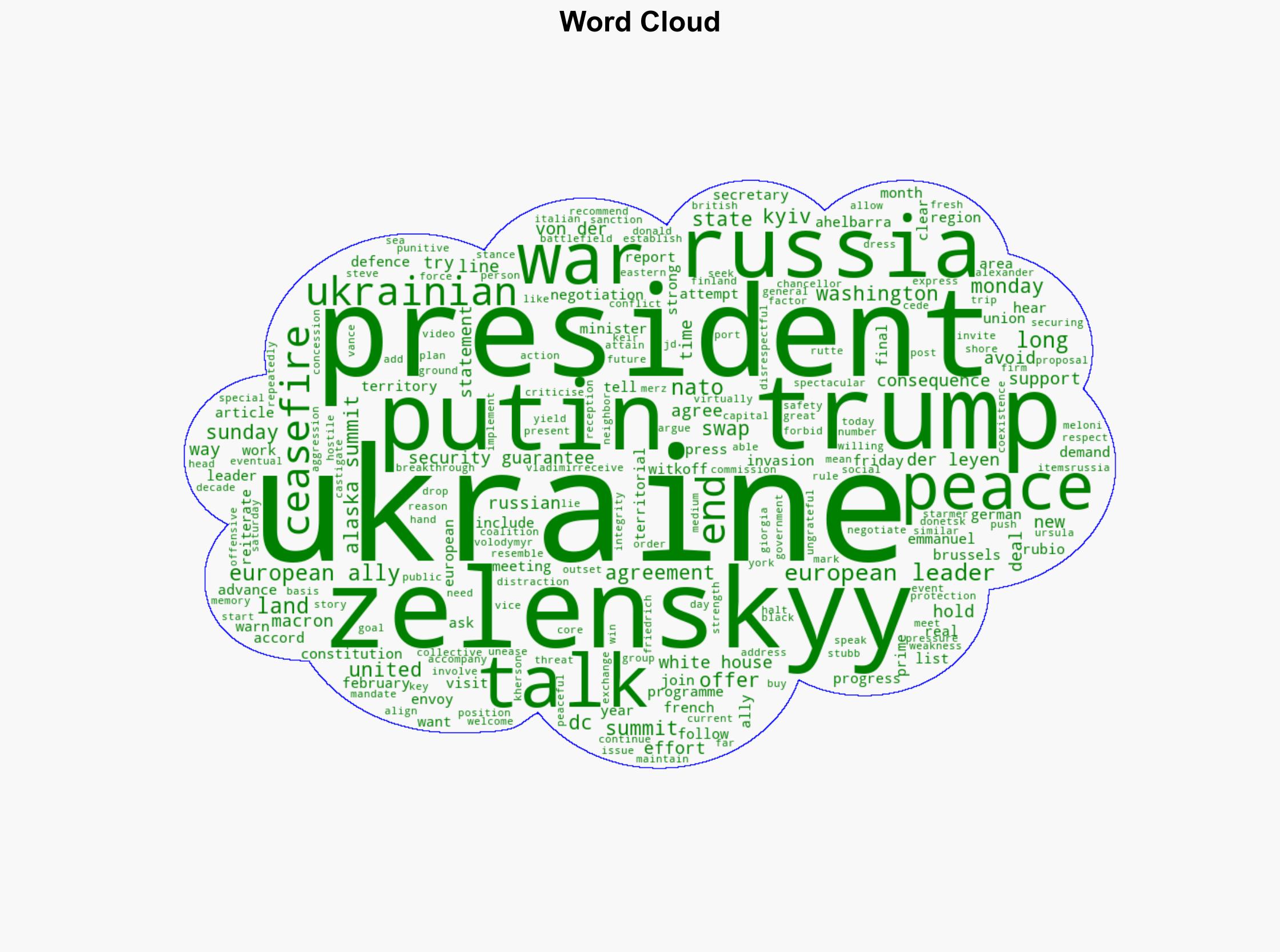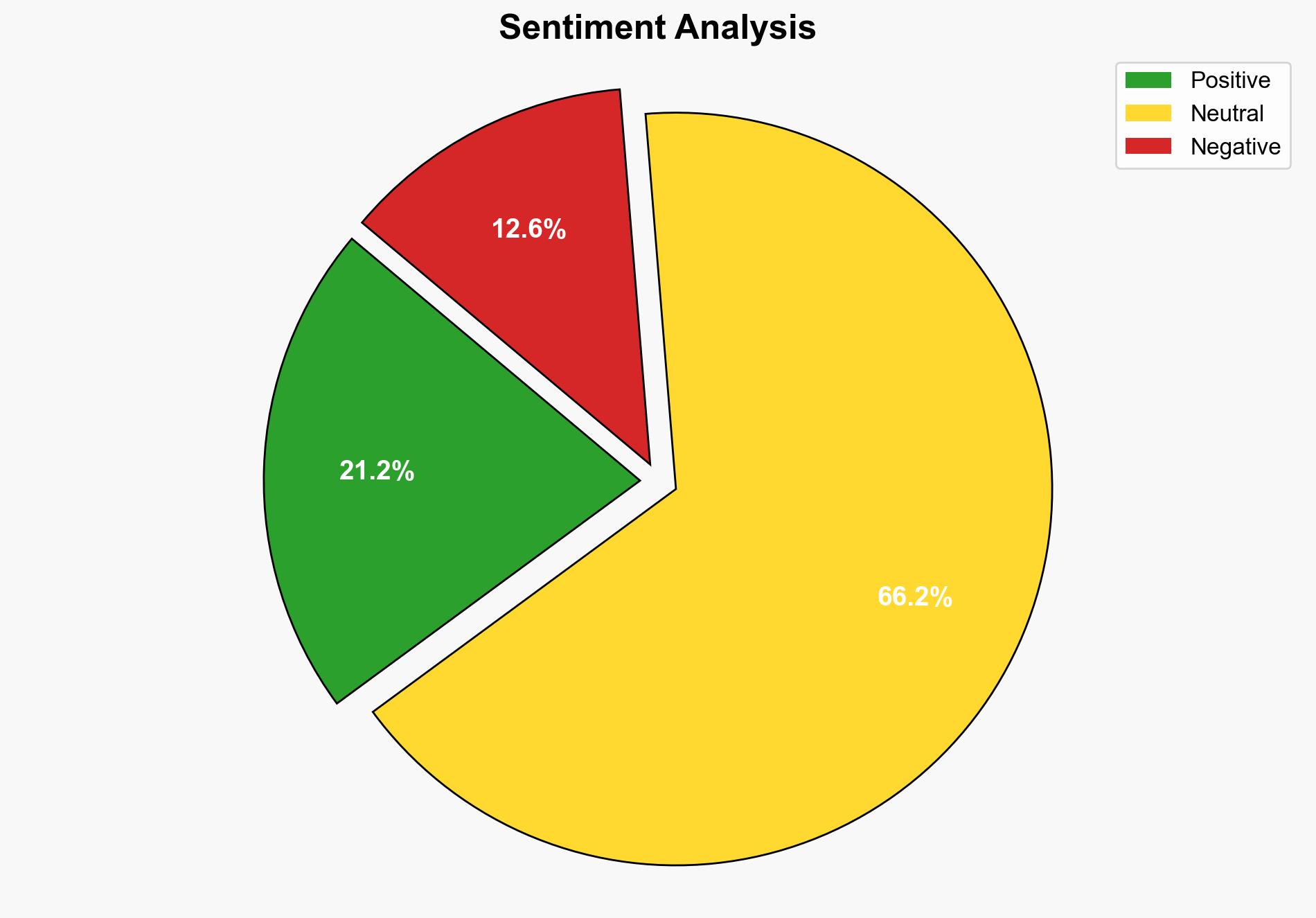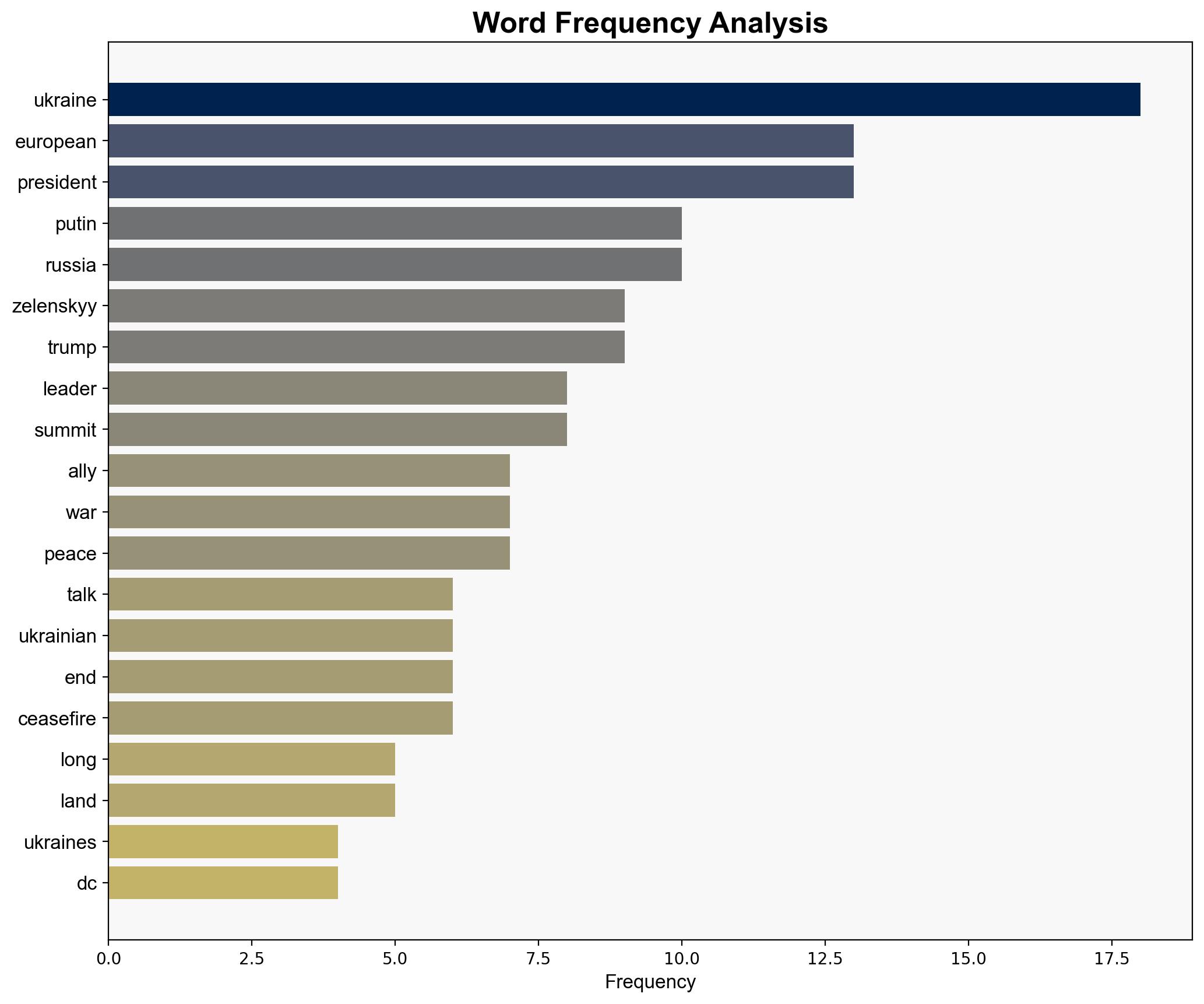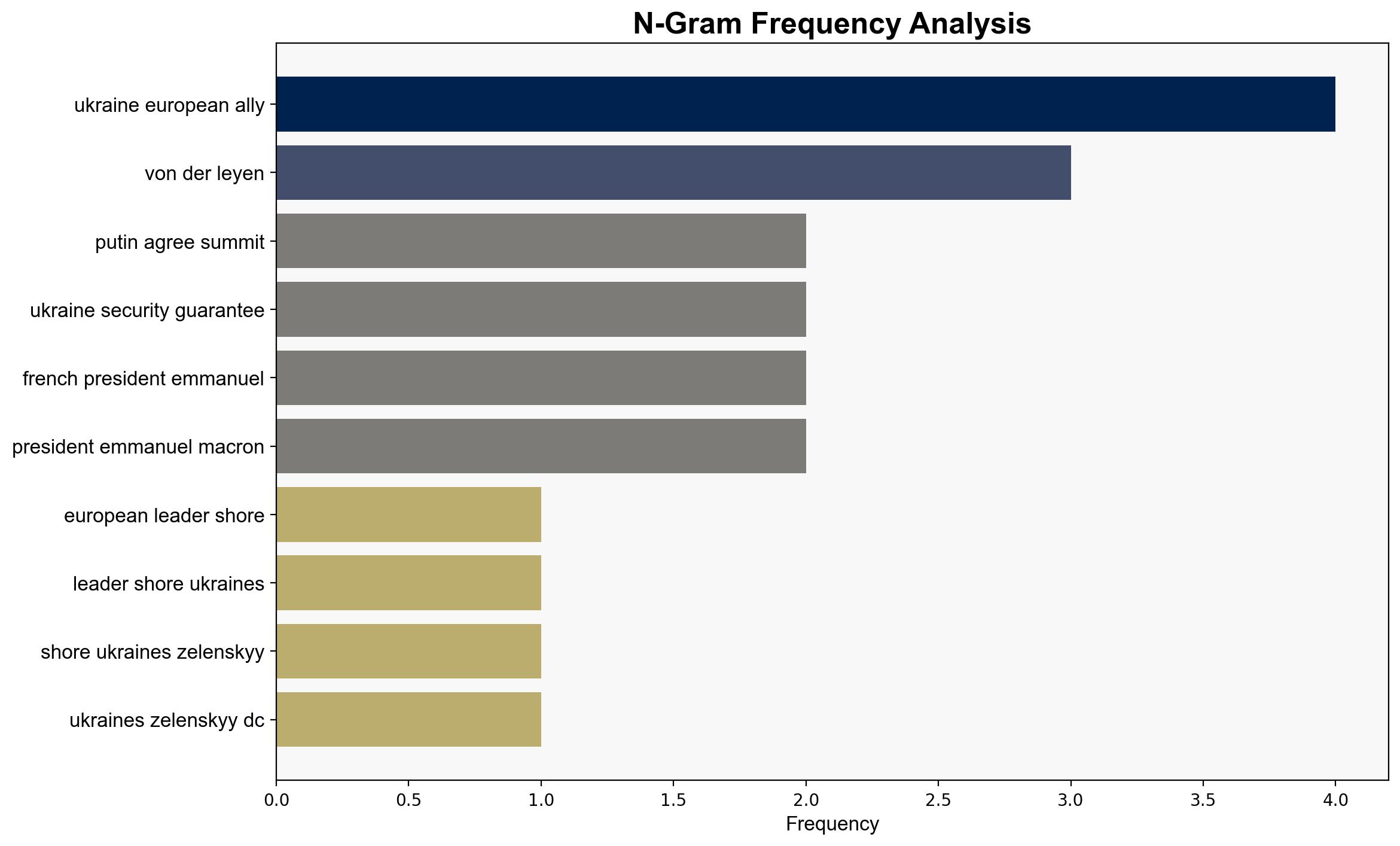European leaders to shore up Ukraines Zelenskyy for DC talks with Trump – Al Jazeera English
Published on: 2025-08-17
Intelligence Report: European leaders to shore up Ukraine’s Zelenskyy for DC talks with Trump – Al Jazeera English
1. BLUF (Bottom Line Up Front)
The most supported hypothesis is that European leaders are strategically aligning with Ukraine’s President Zelenskyy to present a united front in Washington, aiming to influence U.S. policy towards a favorable resolution of the Russia-Ukraine conflict. Confidence level: Moderate. Recommended action: Strengthen diplomatic channels and prepare contingency plans for potential geopolitical shifts.
2. Competing Hypotheses
Hypothesis 1: European leaders are supporting Zelenskyy to ensure a united Western stance in negotiations with Trump, aiming for a ceasefire and long-term security guarantees for Ukraine. This hypothesis is supported by the coordinated visit to Washington and the emphasis on security guarantees akin to NATO’s Article 5.
Hypothesis 2: The European leaders’ support is primarily a diplomatic gesture to maintain appearances of unity, while actual negotiations may involve concessions to Russia, such as territorial compromises. This is suggested by reports of potential land swaps and the mixed reception of Zelenskyy in previous meetings.
3. Key Assumptions and Red Flags
– Assumption in Hypothesis 1: European leaders genuinely seek a unified stance and are not considering territorial concessions.
– Assumption in Hypothesis 2: There is a hidden agenda involving territorial compromises.
– Red Flags: Lack of clarity on the specifics of the security guarantees and the absence of a clear U.S. position on potential territorial concessions. Reports of internal European dissent suggest possible fractures in the alliance.
4. Implications and Strategic Risks
– A failure to present a united front could embolden Russia, leading to further territorial aggression.
– Concessions to Russia might set a precedent, undermining international norms and encouraging similar actions elsewhere.
– Economic sanctions and military aid dynamics could shift, impacting global markets and regional stability.
– Cybersecurity risks may increase as state actors exploit geopolitical tensions.
5. Recommendations and Outlook
- Enhance intelligence-sharing among European allies to ensure alignment and mitigate risks of deception.
- Prepare for potential escalation by reinforcing NATO’s eastern flank and increasing cyber defenses.
- Scenario Projections:
- Best Case: A ceasefire is achieved with robust security guarantees, stabilizing the region.
- Worst Case: Negotiations fail, leading to renewed hostilities and a fractured Western alliance.
- Most Likely: Protracted negotiations with incremental progress, maintaining the status quo.
6. Key Individuals and Entities
– Volodymyr Zelenskyy
– Donald Trump
– Vladimir Putin
– Emmanuel Macron
– Ursula von der Leyen
– Friedrich Merz
– Keir Starmer
– Mark Rutte
– Alexander Stubb
– Giorgia Meloni
– Steve Witkoff
7. Thematic Tags
national security threats, geopolitical strategy, European diplomacy, Russia-Ukraine conflict





